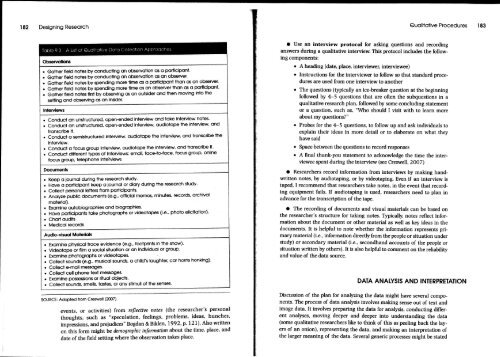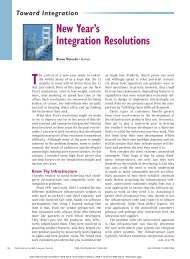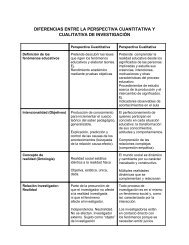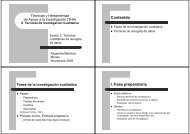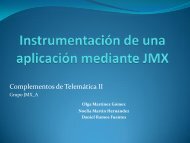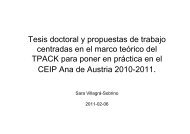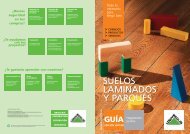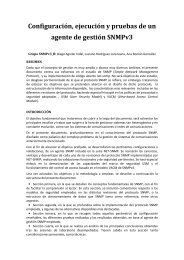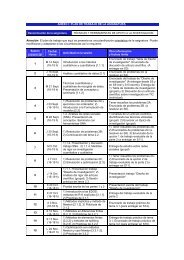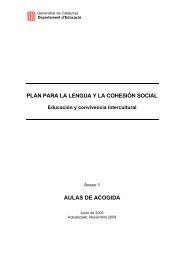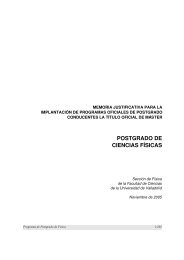Research Questions and Hypotheses
Research Questions and Hypotheses
Research Questions and Hypotheses
Create successful ePaper yourself
Turn your PDF publications into a flip-book with our unique Google optimized e-Paper software.
182 Designing <strong>Research</strong><br />
Qualitative Procedures 183<br />
Table 9,3 A List of Qualitative Data Collection Approaches<br />
Observations<br />
Gather field notes by conducting an observation as a participant.<br />
Gather field notes by conducting an observaban as an observer.<br />
Gather field notes by spending more time as a participant than as an observer.<br />
Gather field notes by spending more time as an observer than as a participant.<br />
Gather field notes first by observing as an outsider <strong>and</strong> then moving into the<br />
setting <strong>and</strong> observing as an insider.<br />
Interviews<br />
Conduct an unstructured, open-ended interview <strong>and</strong> take interview notes.<br />
Conduct an unstructured, open-ended interview, audiotape the interview, <strong>and</strong><br />
transcribe it.<br />
Conduct a semistructured interview, audiotape the interview, <strong>and</strong> transcribe the<br />
interview.<br />
Conduct a focus group interview, audiotape the interview, <strong>and</strong> transcribe it.<br />
Conduct different types of interviews: email, face-to-face, focus group, online<br />
focus group, telephone inte.rviews<br />
Documents<br />
Keep a journal during the research study.<br />
Have a participant keep a journal or diary during the research study.<br />
Collect personal letters from participants.<br />
Analyze public documents (e.g., official memos, minutes, records, archival<br />
material).<br />
Examine autobiographies <strong>and</strong> biographies.<br />
Have participants take photographs or videotapes (i.e., photo elicitation).<br />
Chad audits<br />
Medical records<br />
Audio-visual Materials<br />
Examine physical trace evidence (e.g., footprints in the snow).<br />
Videotape or film a social situation or an individual or group.<br />
Examine photographs or videotapes.<br />
Collect sounds (e.g., musical sounds, a child's laughter, car horns honking).<br />
Collect e-mail messages.<br />
Collect cell phone text rnessages.<br />
Examine possessions or ritual objects.<br />
Collect sounds, smells, tostes, or any stimuli of the senses.<br />
SOURCE: Adapted from Creswell (2007).<br />
events, or activities) from reflective notes (the researcher's personal<br />
thoughts, such as "speculation, feelings, problems, ideas, hunches,<br />
impressions, <strong>and</strong> prejudices" Bogdan & Biklen, 1992, p. 121). Also written<br />
on this form might be demographic information about the time, place, <strong>and</strong><br />
date of the field setting where the observation takes place.<br />
Use an interview protocol for asking questions <strong>and</strong> recording<br />
answers during a qualitative interview. This protocol includes the following<br />
components:<br />
A heading (date, place, interviewer, interviewee)<br />
Instructions for the interviewer to follow so that st<strong>and</strong>ard procedures<br />
are used from one interview to another<br />
The questions (typically an ice-breaker question at the beginning<br />
followed by 4-5 questions that are often the subquestions in a<br />
qualitative research plan, followed by some concluding statement<br />
or a question, such as, "Who should I visit with to learn more<br />
about my questions?"<br />
Probes for the 4-5 questions, to follow up <strong>and</strong> ask individuals to<br />
explain their ideas in more detail or to elaborate on what they<br />
have said<br />
Space between the questions to record responses<br />
A final thank-you statement to acknowledge the time the interviewee<br />
spent during the interview (see Creswell, 2007)<br />
<strong>Research</strong>ers record information from interviews by making h<strong>and</strong>written<br />
notes, by audiotaping, or by videotaping. Even if an interview is<br />
taped, I recommend that researchers take notes, in the event that recording<br />
equipment fails. If audiotaping is used, researchers need to plan in<br />
advance for the transcription of the tape.<br />
The recording of documents <strong>and</strong> visual materials can be based on<br />
the researcher's structure for taking notes. Typically, notes reflect information<br />
about the document or other material as well as key ideas in the<br />
documents. It is helpful to note whether the information represents primary<br />
material (i.e., information directly from the people or situation under<br />
study) or secondary material (i.e., secondh<strong>and</strong> accounts of the people or<br />
situation written by others). It is also helpful to comment on the reliability<br />
<strong>and</strong> value of the data source.<br />
DATA ANALYSIS AND INTERPRETATION<br />
Discussion of the plan for analyzing the data might have several components.<br />
The process of data analysis involves making sense out of text <strong>and</strong><br />
image data. It involves preparing the data for analysis, conducting different<br />
analyses, moving deeper <strong>and</strong> deeper into underst<strong>and</strong>ing the data<br />
(some qualitative researchers like to think of this as peeling back the layers<br />
of an onion), representing the data, <strong>and</strong> making an interpretation of<br />
the larger meaning of the data. Several generic processes might be stated


